From fuel injection to satellite navigation, automotive technology is always moving forward. And perhaps nowhere is that relentless advancement more noticeable than with vehicle headlights—in just a few decades we’ve gone from incandescent sealed beams to adaptive LED arrays.
Yet the continual evolution of automotive headlights means it’s no longer a simple question of how to pick the right headlight bulb. With the advent of LEDs, HID projectors, and halo rings, the question of replacing headlights becomes a deep dive into the world of bulbs, specialized housings, and conversion kits.
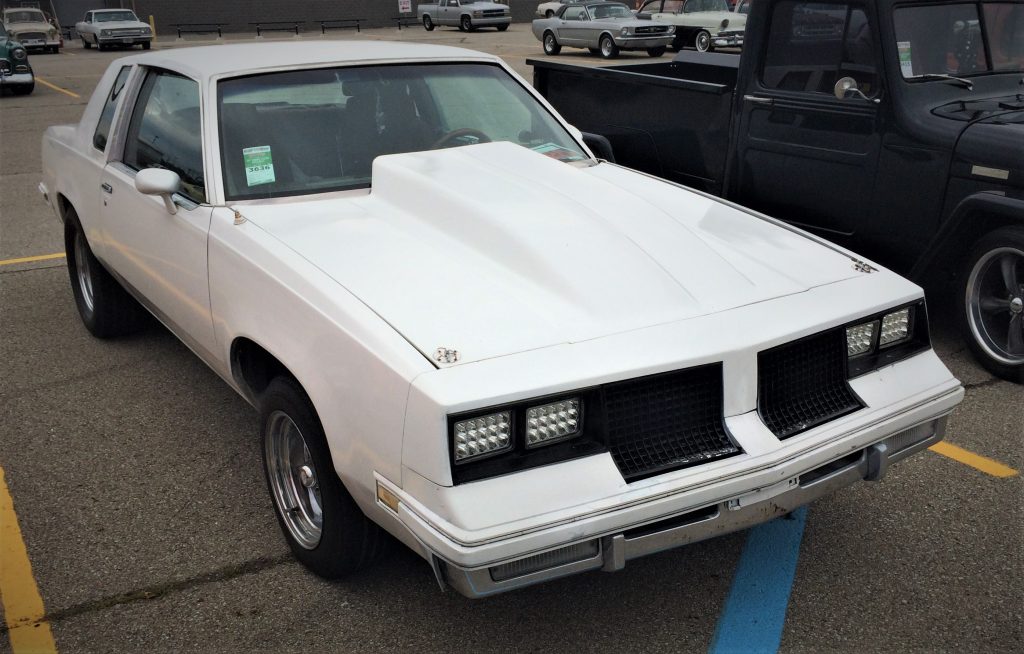
To help you sort through it all, we’ve developed a straightforward headlight buyer’s guide, along with a glossary of some of the more common automotive headlight terms you’ll come across. That way you’ll know how to select the right headlights for your car, truck, or SUV—vintage or modern.
And if you have any questions, drop us a note in the comments and we’ll work to get you an answer.
***
Vehicle Headlight Buyer’s Guide
***
When shopping for new headlights, the first question you should ask is: Are you happy with your current ones?
If the answer is yes, then picking replacement headlights is pretty easy and for many applications, you can just pop in a new set of bulbs or sealed beam assembly*. Our friends at Oracle Lighting have a handy online vehicle light bulb identification tool. Simply enter your vehicle’s year, make, and model, and it’ll spit out the type and location of all the bulbs your car or truck uses. Then, just write them down and take those over to your favorite automotive parts website, enter the bulb ID in the search box, and peruse your options.
*The difficulty of replacing headlight bulbs depends entirely on the vehicle. In our experience, the process can range from a simple two minute pop-n-swap to a 10+ minute affair that involves removing the wheel and pulling back the fender liner. Do a quick internet search on your vehicle year/make/model or consult your owner’s manual to learn the process for your specific car, truck, or SUV.
If you’re not happy with your vehicle’s headlight output, don’t despair, as there are plenty of ways that you can upgrade your vehicle’s existing ones, like-a so:
5 Ways to Upgrade Your Vehicle’s OE Stock Headlights
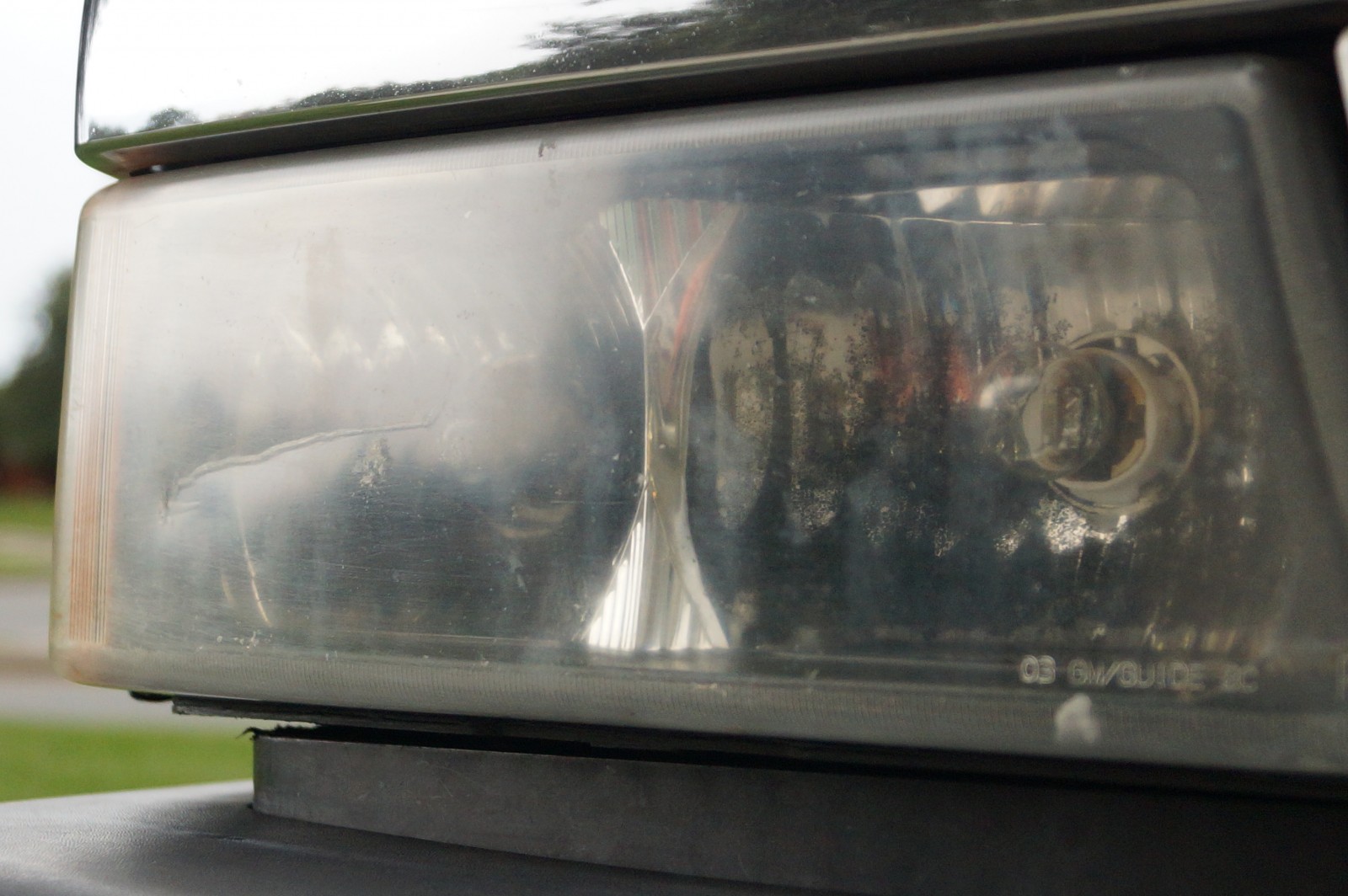
Before we dive in, the first thing to understand about upgrading your headlights is that, depending on where you live, your vehicle likely has tight governmental guidelines on what you can (and can’t) change, including where the lights are located and what color they are. So check your local laws and regulations before you start making any modifications.
That said, your headlight upgrade options will probably be dependent on the year, make, and model of your vehicle—and your budget. Here are five of the most popular tactics.
1. Upgrading Headlight Bulbs
The easiest path will probably be to just upgrade your headlight bulbs. From traditional incandescent and HID xenon bulbs to modern LED headlight swap bulbs, the headlight aftermarket has plenty of options for you. In many cases, it’s a simple matter of selecting the right upgrade bulbs for your vehicle and popping them into place with no further modifications. Again, use this handy vehicle light bulb identification tool from Oracle to help determine what headlight bulbs you’ll need.
2. Upgrading Headlight Assemblies
The next level up is a projector or LED headlight assembly conversion kit. This involves removing your vehicle’s original headlight assembly (bulbs, housing, and all), and replacing it with an upgraded projector or LED unit. While this tactic is obviously more expensive and time consuming, the results can pay dividends.
But since these headlight assembly upgrade kits are application specific, it means someone has to make a headlight conversion kit for your exact vehicle. While there is plenty of support for popular vehicles like late model trucks and muscle cars, this may not be an option for some more obscure, older rides.
3. LED Headlight Conversion Kits
You may find LED conversion kits available as complete LED conversion housing assemblies, or as individual LED conversion bulbs. This is another way to step up from a traditional filament incandescent bulb to modern LED lighting.
One word of caution with universal LED conversion headlight bulbs though: As they tend to have integrated heat sinks and accessory wiring, make sure you have room to fit them behind your headlight housing before making a purchase.
4. Sealed Beam Conversion Kits
Older vehicles made from around the mid 1980s and back use a federally-mandated sealed beam headlight. While nowadays those headlights have been overshadowed (pun!) by more modern headlights, the good news is, that old government standardization means that it’s really easy for companies to make LED sealed beam headlight conversion kits for a wide range of cars and trucks that install without a lot of hassle.
5. Headlight Relay Upgrade
Here’s another upgrade that’s popular with older vintage vehicles. Using separate relays, this modification changes the electricity’s path to the headlights in an effort to reduce parasitic electrical loss along the way. This lets you keep your factory headlights and headlight switch, and some companies even offer headlight relay mod kits that allow you to make the upgrade without permanent modifications to your wiring harness.
In fact, we dedicated an entire article to this topic, and you can read it here: How to Upgrade Dim Headlights with a Headlight Relay Mod
Hear any unfamiliar lighting terms of concepts? Check out our handy automotive lighting dictionary below.
***
Glossary of Common Headlight Terms & Definitions
(Terms listed in alphabetical order)
***
Candela
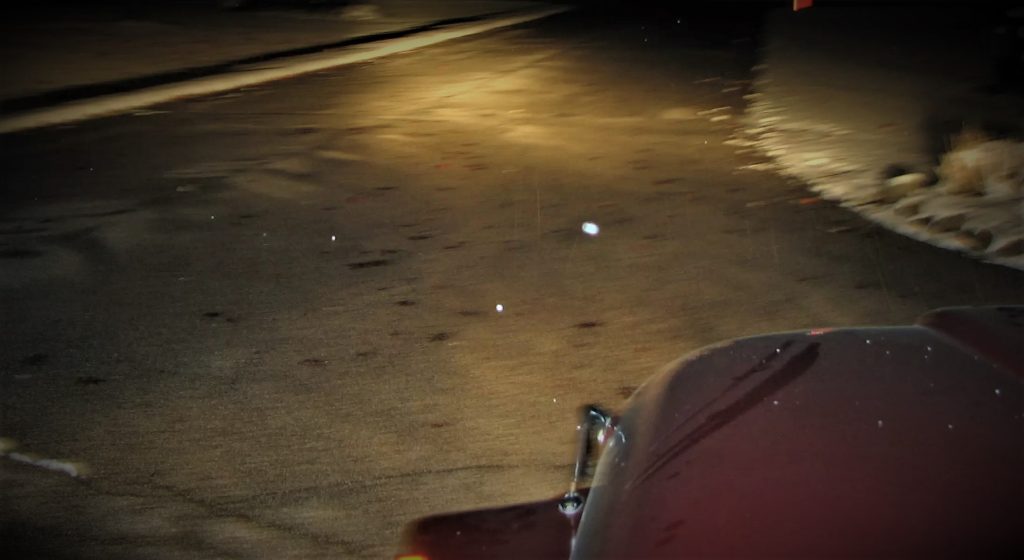
The term candela is often seen alongside the term lumens. Though they’re similar, there is an important distinction (so make sure you scroll down to read the lumens definition too). In an automotive lighting context, candela refers to the amount of light given off in a particular direction—as opposed to lumens referring to total light output. Ergo, since it’s talking about focused, aimed light output, candela can be an especially useful spec when talking about headlights.
***
Color/Light Temperature
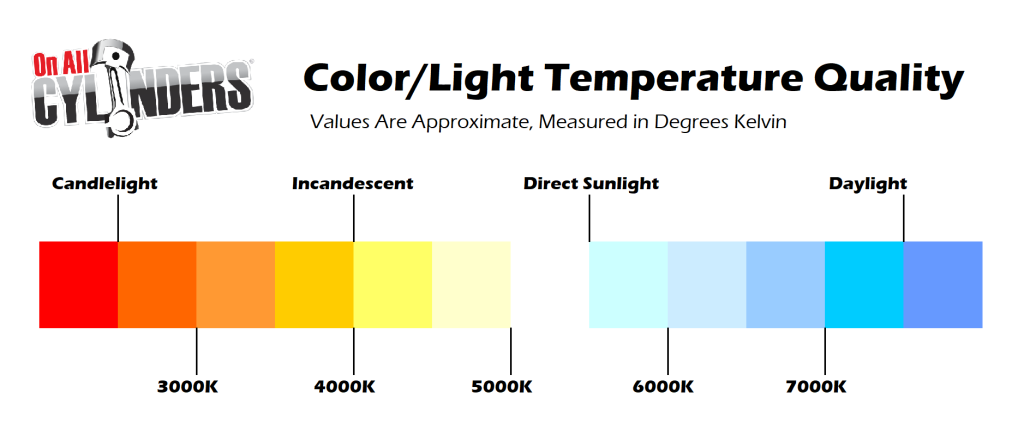
One of the specs you’ll notice right away when shopping for headlight bulbs is color temperature (sometimes called light temperature). In a context of automotive lighting, this refers to the quality of light output in regard to the visible light spectrum. Lower temperature bulbs, like traditional incandescent, will put out a more yellowish light. Higher temperature bulbs (or LEDs) put out a more white or bluish light.
While light temperature often boils down to a personal aesthetic choice, the important thing to realize is that you shouldn’t associate color temperature with light power/output. IE, the higher the number doesn’t mean more powerful light—elsewise we’d all have ultraviolet headlights!
***
Daytime Running Light (DRL)
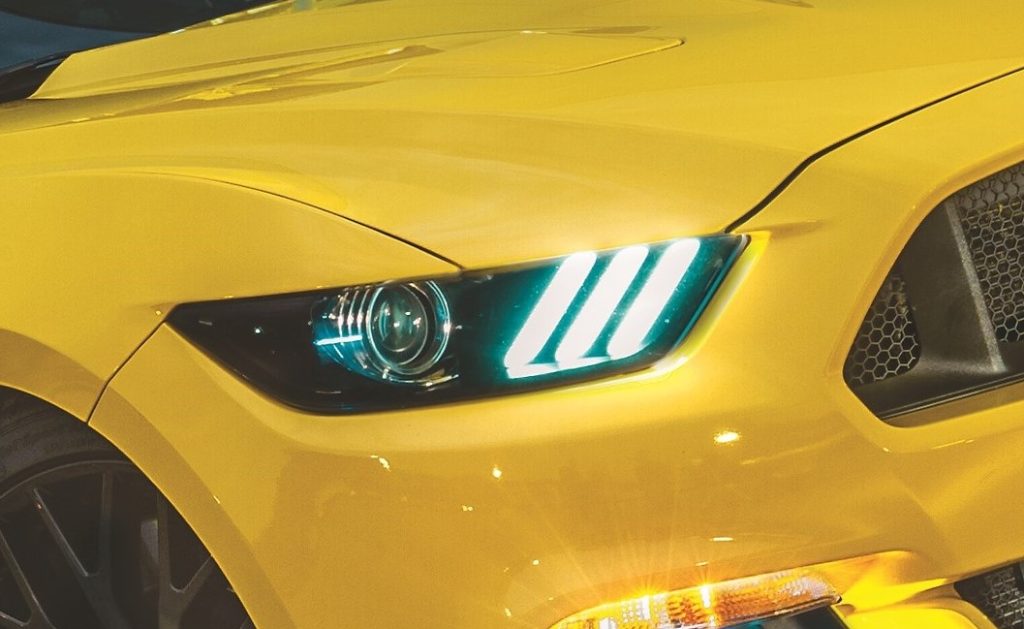
DRL stands for daytime running light(s), which typically means nowadays the headlight housing features small indicator lights that automatically turn on whenever the vehicle is moving. While they can be found on newer cars sold in the United States, DRLs are currently not required by U.S. regulations.
But if you live in another country (looking at you, Canada), daytime running lights are required by law. So if you plan on replacing or upgrading your DRL-equipped headlights, make sure to check your local laws and regulations first.
DRLs aren’t the same as parking lights either, as they use distinct forward-facing light arrays instead of re-purposing your taillights and side marker lights. As alluded to above, they’re often integrated into the headlight assembly in modern cars, yet it’s not uncommon to see DRLs in standalone housings on older vehicles.
***
Halo Headlights
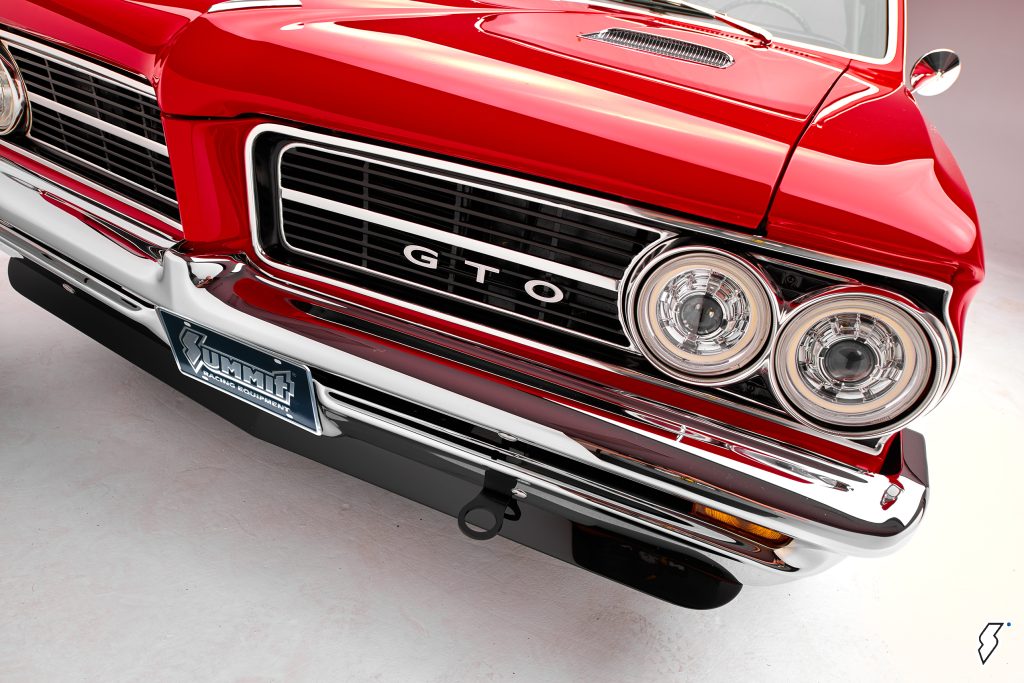
It’s no secret where halo headlights got their name. Thanks to a signature illuminated light ring around the headlight lens, halo headlight housings offer a striking, stylish look—but it’s far more than cosmetic. For many applications, the Halo itself can serve as a daytime running light (DRL) in vehicles that require them. And if you’ve got a stripped-down hot rod, custom cruiser, or other vintage ride, companies make halo headlights where the halo LED array serves as a switchback turn signal indicator lamp too—all in a single, compact housing.
Sound cool? You can buy an entire halo headlight assembly, or opt for a halo kit to adapt halos to your existing headlights.
***
HID Headlights
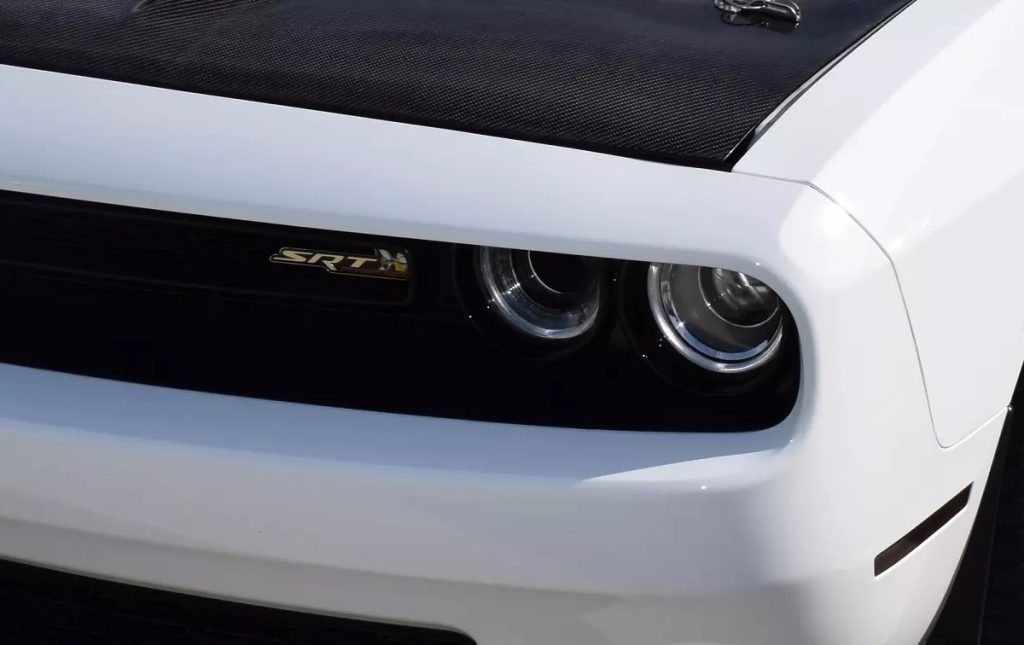
HID is an acronym for “High Intensity Discharge,” which is a fancy way of saying HID headlight bulbs can put out more light than traditional halogen headlight bulbs.
Just like LEDs, HID bulbs tend to be more durable and efficient than their halogen counterparts as well. In addition to improved brightness, HID headlights are often recognized by the lights’ color temperature and telltale bluish tint—a result of the HID’s use of a gas called xenon to produce light. For this reason, you may hear HIDs referred to as xenon headlight bulbs too.
Due to their high output, HID bulbs are often found in projector headlight housings in an effort to reduce light scatter and avoid blinding other drivers.
***
LED Headlights
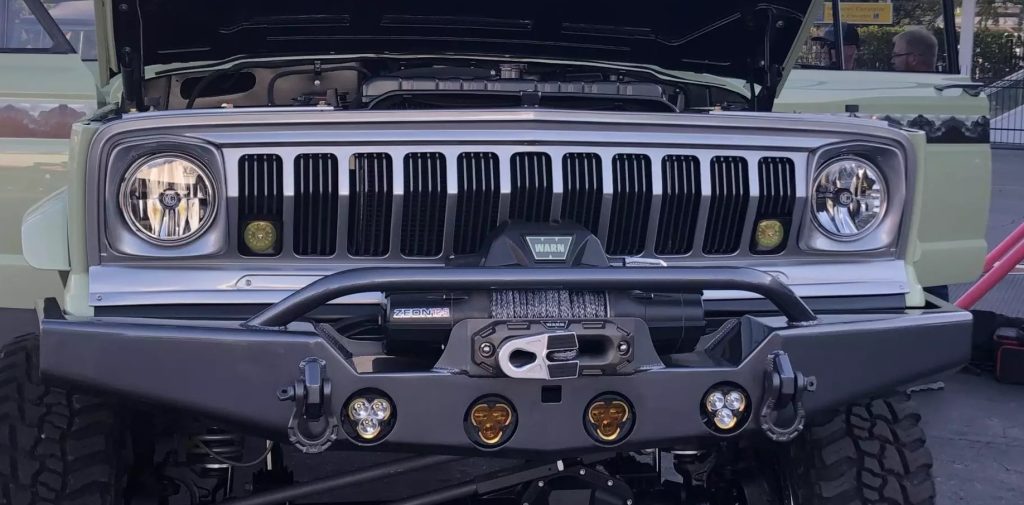
Short for “Light Emitting Diode,” LEDs have revolutionized automotive lighting over the past several years. Generally speaking, LED lighting is more efficient and draws less electrical current than a traditional bulb, so there’s less strain on a wiring harness—which is particularly helpful in an older or vintage vehicle. LEDs typically don’t generate as much heat as an incandescent either and they tend to be a bit more durable too, making LED lighting a good choice for a rough-and-tumble off-road 4×4 or performance vehicle.
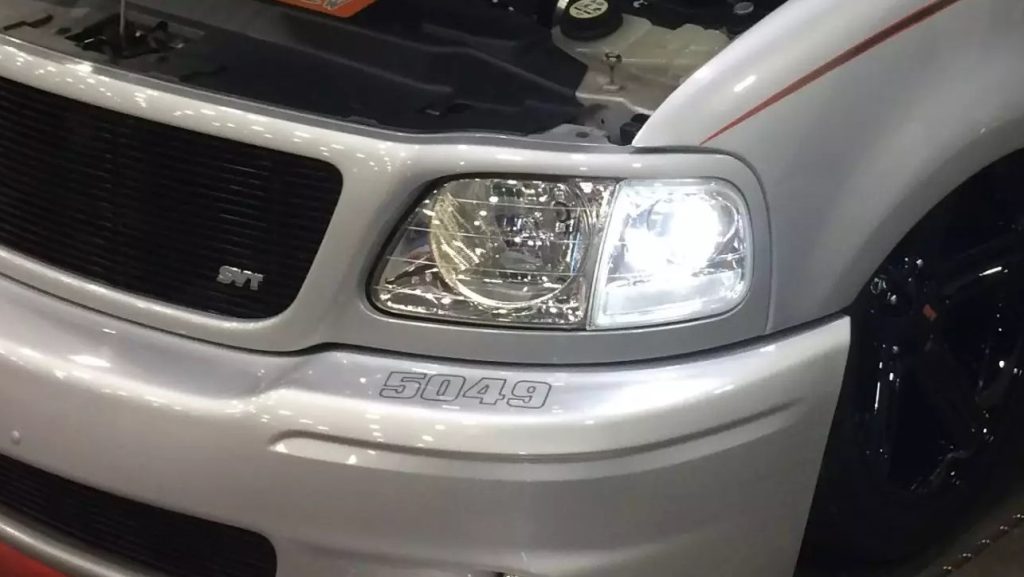
Want to upgrade to LED headlights? You can get an entire LED headlight housing or opt for individual LED replacement bulbs—though LED bulbs usually have a distinct shape/size, so make sure you have enough room behind your headlight assembly to install them.
***
Lumens
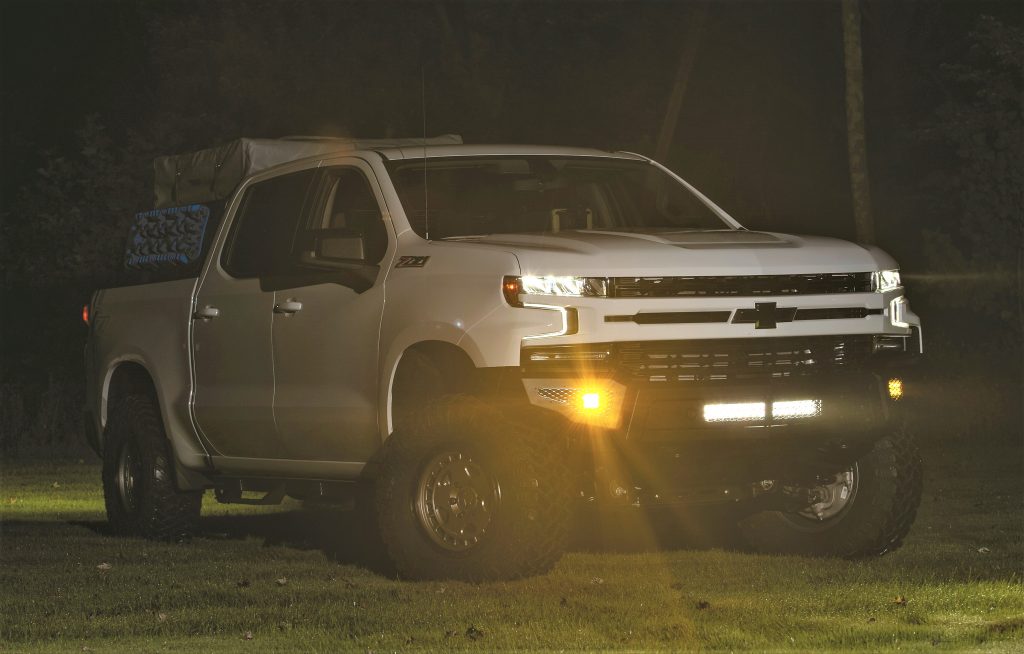
While we could devote an entire article to this topic*, generally speaking in the context of automotive lighting, lumens is a measurement of the light a specific source puts out. In other words, the bigger the number, the more space that’s lit up. So lumens is the total light output, in all directions, which makes it an important spec to consider, particularly when shopping for headlights.
*Oh wait, we did. Check out this standalone article/video: Do More Lumens Mean More Light?
***
Projector Headlights
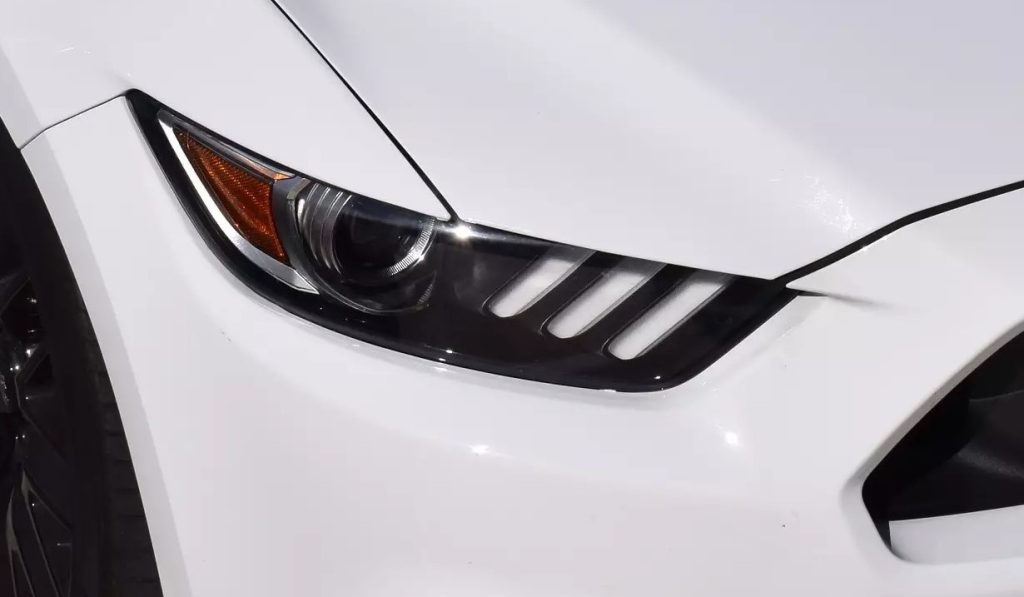
While the terms HID and LED refer to different types of light sources, a “projector headlight” alludes to the housing. After the sealed beam faded away, headlights typically featured reflector housings, in which reflective surfaces behind a shrouded bulb bounce the light forward through a clear front cover.
Nowadays though, modern projector headlights use a specialized lens on the projector housing to better aim and focus the light output. Coupled with an HID bulb, projector headlight housings deliver a precise beam of light.
Since their design is so critical to the light output, these headlights are typically available as complete projector headlight assemblies. Just make sure to properly aim your projector headlights once they’re installed to prevent them from distracting oncoming traffic.
***
Reflector Headlights
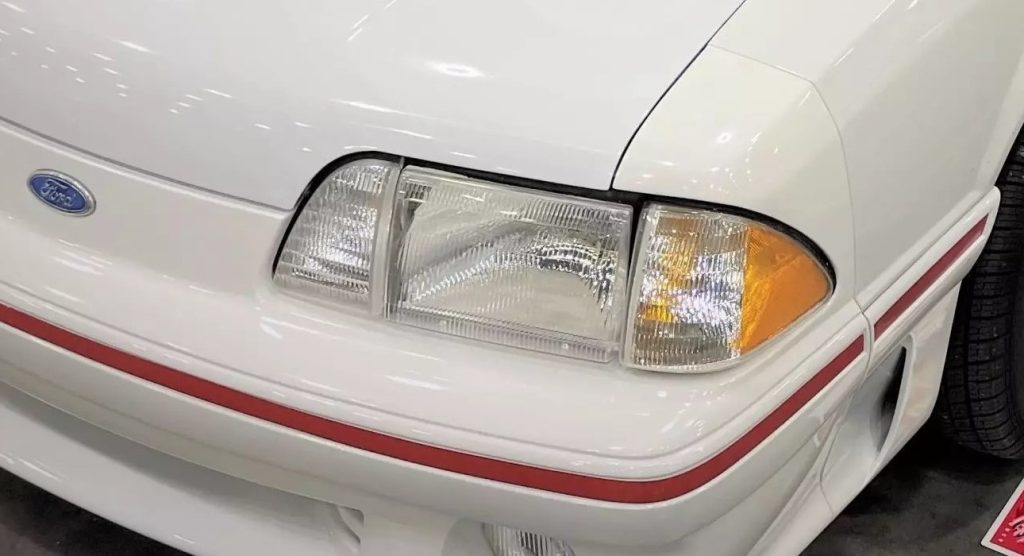
Before we got projector headlights, we had the reflector headlight. The reflector headlight housing arrived after the sealed beam regulation lapsed in 1984. It essentially allowed automotive manufacturers to make their own, unique headlight housings, which opened the door to a ton of aerodynamic and styling possibilities.
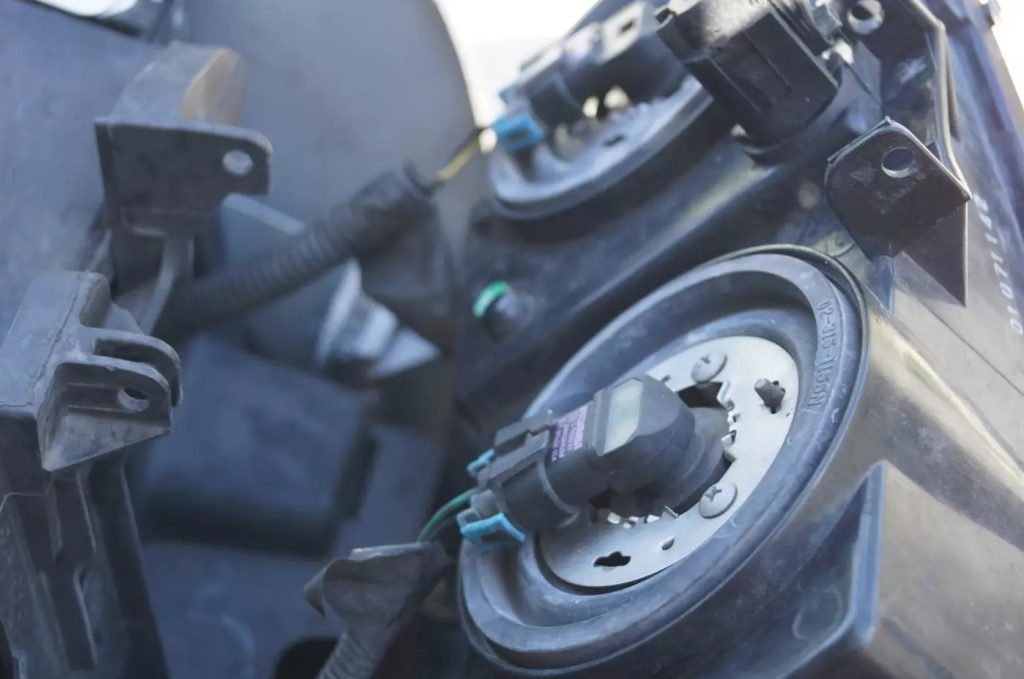
It also meant that you no longer had to swap out a large bulb/lens unit every time a bulb burned out. But conversely, it required you to know exactly which headlight bulb type your vehicle required. And you also had to demonstrate some care when installing the bulbs as they are fragile and the bulb capsule can be affected by the oils on your hands and other foreign substances.
At the bottom of this article we’ve got links to a handy bulb identification guide and an article that outlines some precautions to take when installing new headlight bulbs.
***
Sealed Beam Headlights
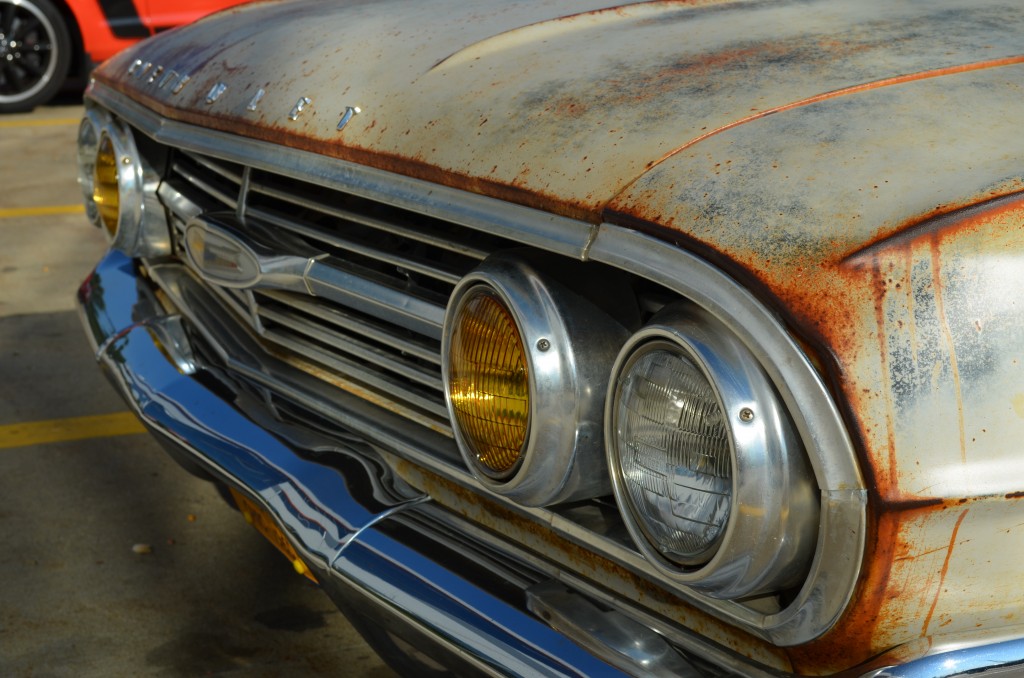
Got a vehicle made before 1984? Then there’s a good chance it’s got sealed beam headlights. That’s because the sealed beam was once mandated in the United States as a way to standardize headlights across different manufacturers. That regulation ended in 1984 though, paving the way for folks to change the individual headlight bulb without having to ditch the lens/housing assembly.
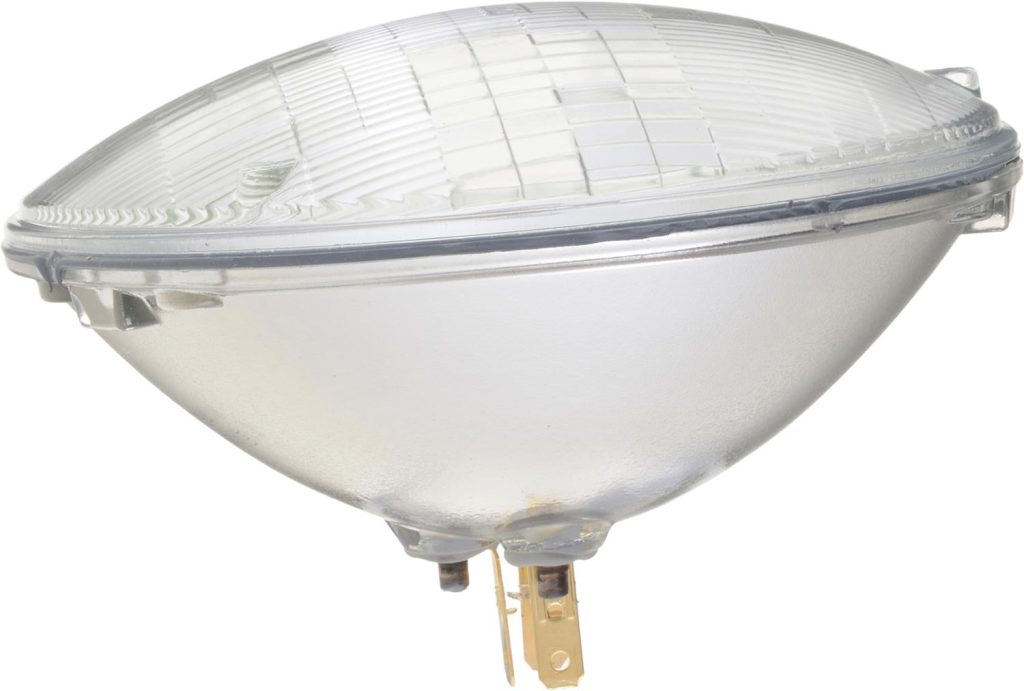
Nowadays though, when compared to modern HID and LED alternatives, sealed beam headlights tend to have less light output.
But the good news is, now that the 1984 regulation has lapsed in the U.S., many owners of older cars and trucks opt for LED or HID sealed beam headlight conversion kits to run more modern vehicle lighting with improved light output and durability.
***
Switchback Lights
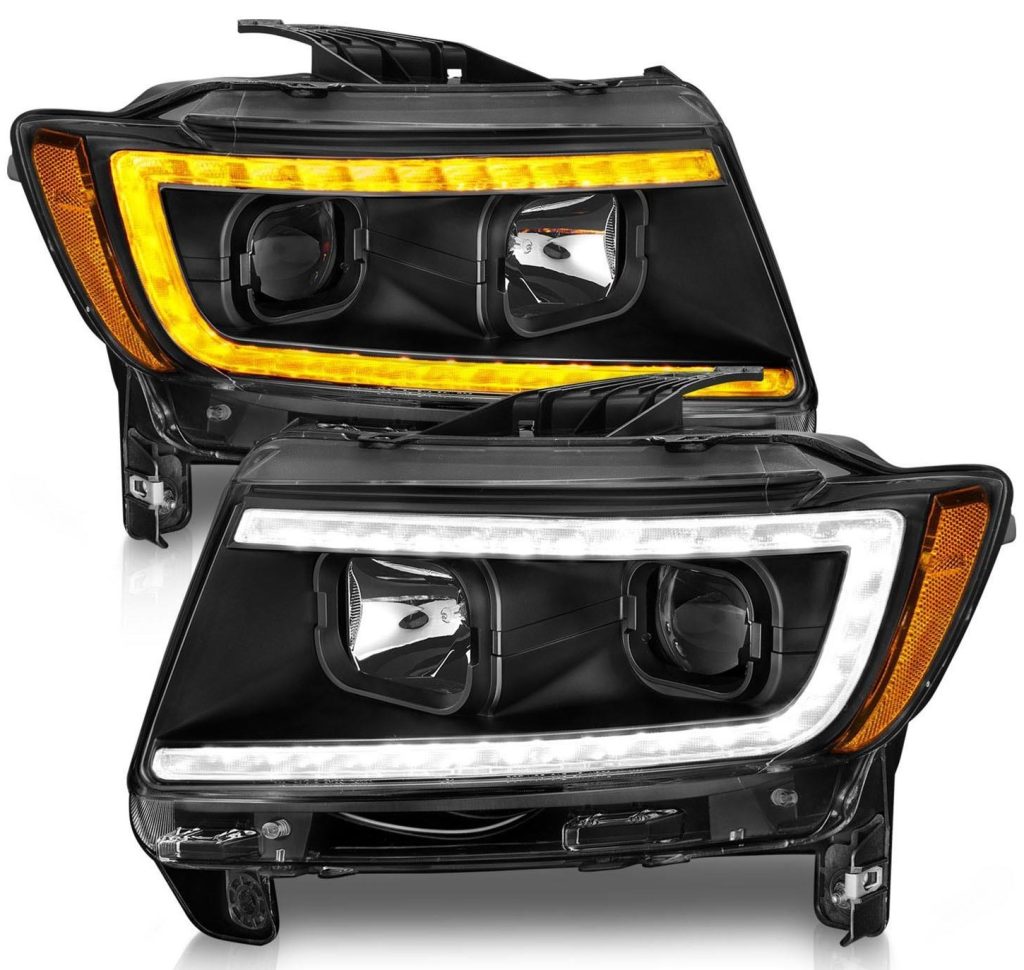
Switchback lights or switching lights refer to a special type of LED array found in some headlight housings. In a switchback style setup, the supplemental LEDs around the headlight pull double duty. They switch colors back and forth so they can simultaneously serve as daytime running lights and turn signal indicators.
Here’s how they work: When you’re driving normally, the switchback LED array is illuminated white in DRL mode. When you hit your turn signal, the switchback LED array flips to amber and becomes your turn signal indicator light. Complete your turn and it switches back to a LED daytime running light.
Some switchback LED systems also allow you to change the colors for a slick, custom vibe too—for show only. Depending on where you live, there are likely tight regulations concerning the location and colors of your vehicle lighting.
These lights are often sold as complete switchback headlight assemblies, yet standalone switchback halo headlight kits offer similar capabilities.
***
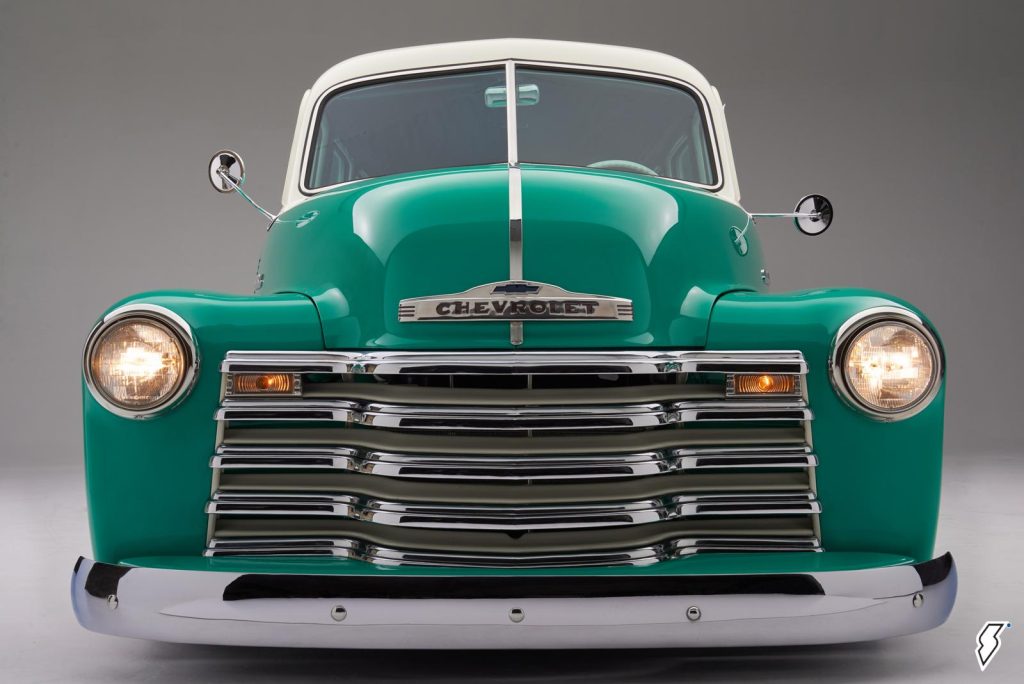
***
More Helpful Articles on Lights & Lighting
For this story, we only focused (pun!) on headlights, with small references to DRLs and turn signals. So if you have questions on driving lights, taillights, backup lights, or interior lights, here’s some good reading material for you to peruse.
- A Quick Guide to Automotive Lighting
- A Quick Guide to Off-Road Lighting & Auxiliary Lights
- Vehicle Year/Make/Model Light Bulb Fitment & ID Guide
- Why Do My Headlights Keep Burning Out?
- Headlight Replacement Tips for Better Night-Driving Visibility
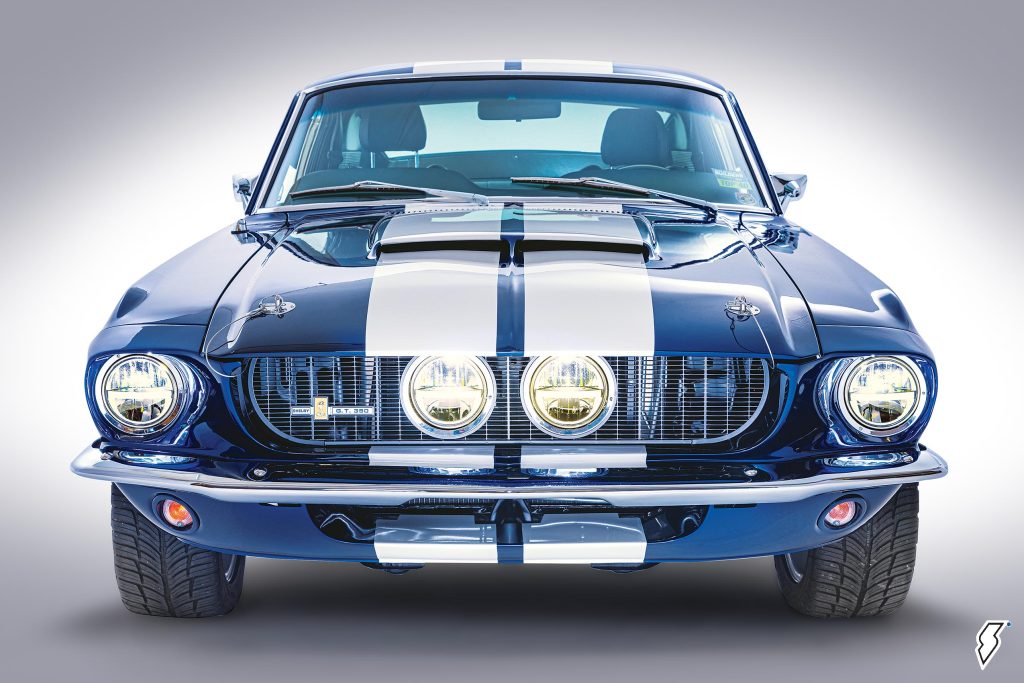

Comments